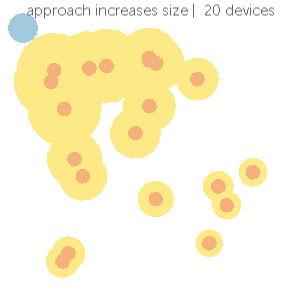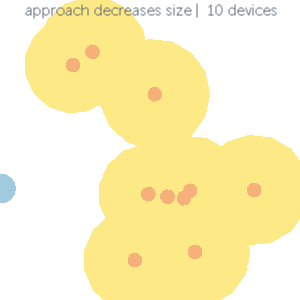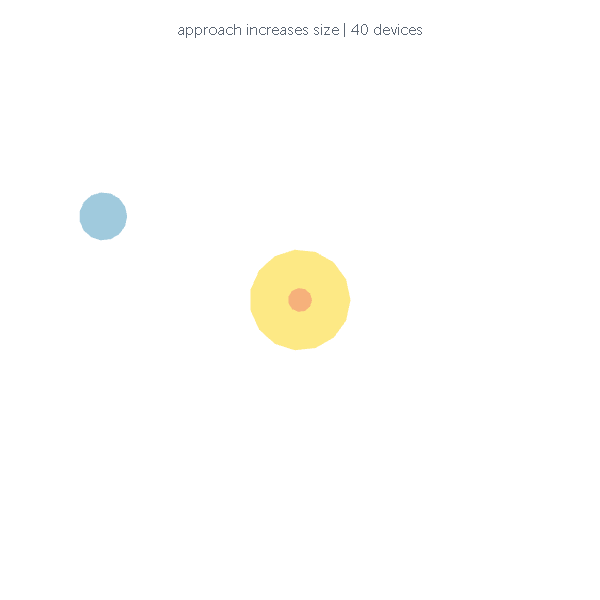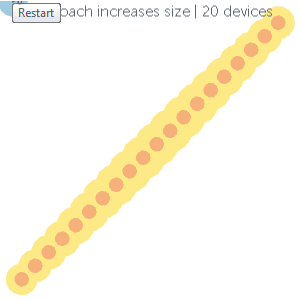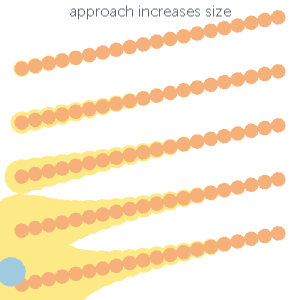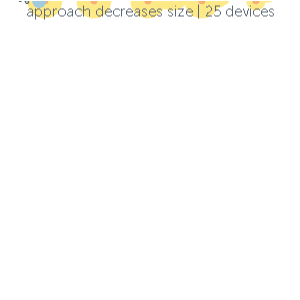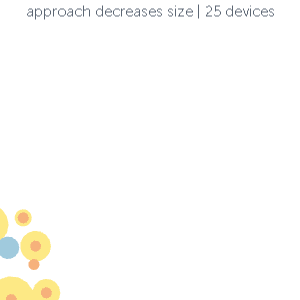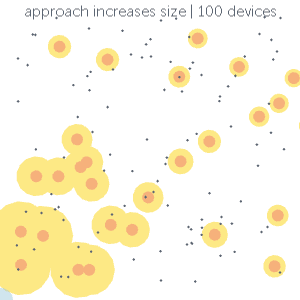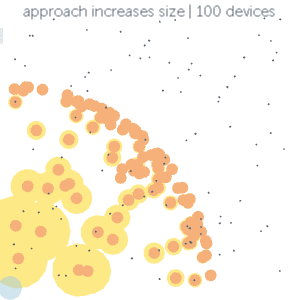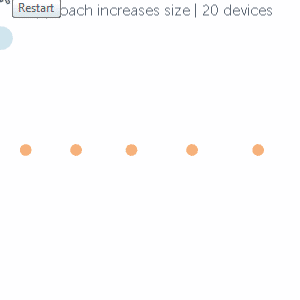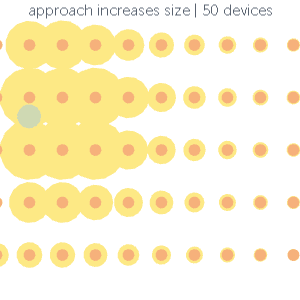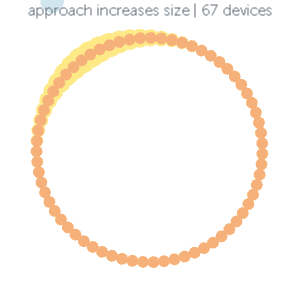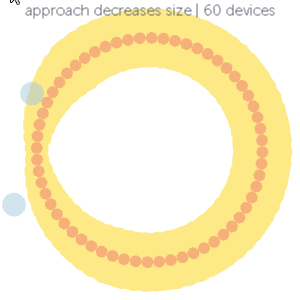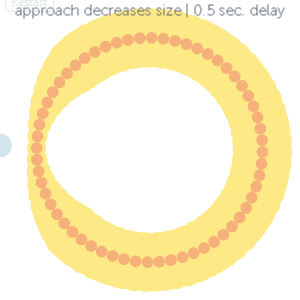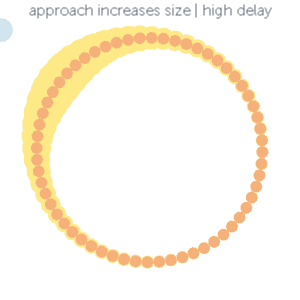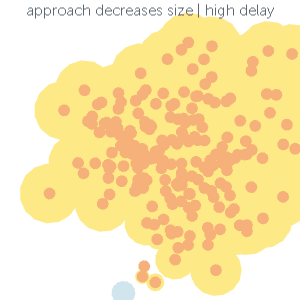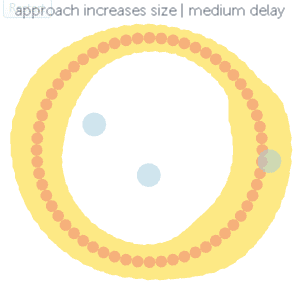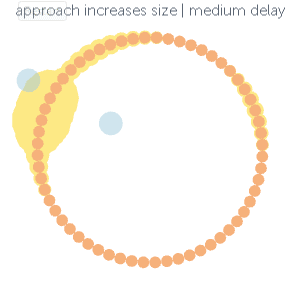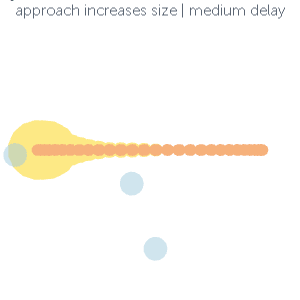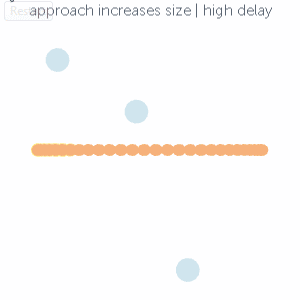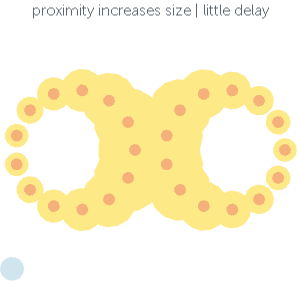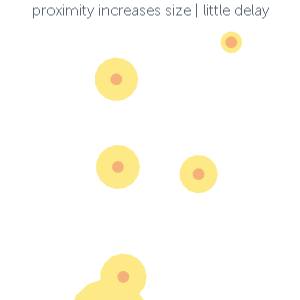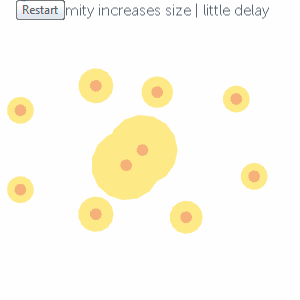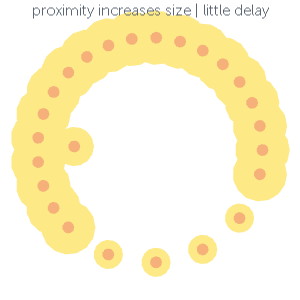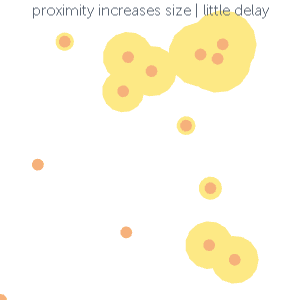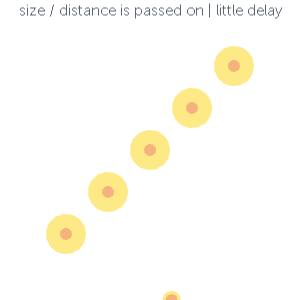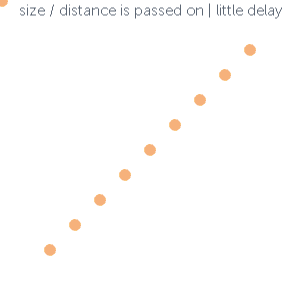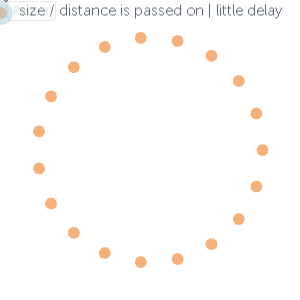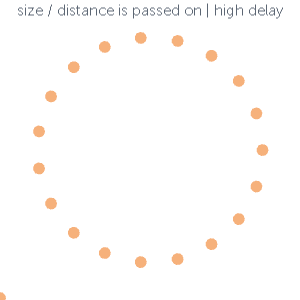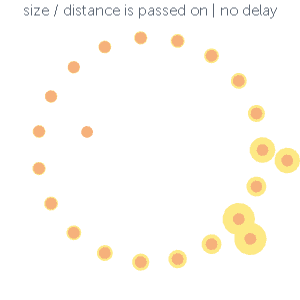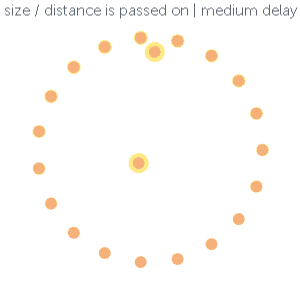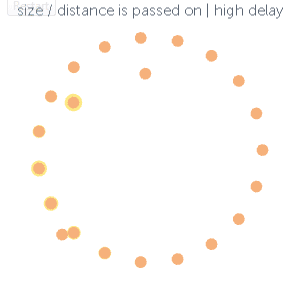Traits
explorative study
Parameters that have been SET, not resulted
A distribution
B regarded environment
C motion device
D motion user
E reacting to
F delay
G equality between devices
H device density
sample 1, 2, 5
A random
B user
C stationary
D freely
E distance
F none
G all
H medium
sample 6
A random
B user
C moving outwards from center
D freely
E distance
F none
G all
H high
sample 7
A linear
B user
C stationary
D freely
E distance
F none
G all
H low
sample 8
A linear
B user
C stationary
D freely
E distance
F none
G all
H high
sample 9 - 10
A grid
B user
C math function attracted to user
D freely
E distance and position
F none
G all
H high
sample 11 - 12
A random
B user
C math function attracted to user
D freely
E distance and position
F none
G all
H high
sample 13
A linear
B user
C constant straight movement on line, attracted to user
D freely
E distance
F little
G all
H low
sample 14
A linear
B user
C constant straight movement on line, attracted to user
D freely
E distance
F little
G all
H high
sample 15 - 16
A circular
B user
C stationary, constant movement on circle
D one freely, one orbit
E distance
F medium
G all
H high
sample 17
A circular
B user
C stationary
D freely
E distance
F medium, high
G all
H high
sample 18
A circular
B user
C stationary
D freely
E distance
F high
G all
H high
sample 19
A random
B user
C random, flock like
D freely
E distance
F high
G all
H high
sample 20 - 21
A circular
B user
C stationary
D random, flock like
E distance
F medium
G all
H high
sample 22
A linear
B user
C stationary
D random, flock like
E distance
F medium
G all
H high
sample 23
A linear
B user
C stationary
D random, flock like
E distance
F high
G all
H high
sample 24
A circular
B devices
C controlled with slider
D stationary
E distance
F little
G all
H medium
sample 25
A random
B devices
C random, flock like
D none
E distance
F little
G all
H medium
sample 26
A circular
B devices, user
C stationary, constant movement on circle
D freely
E distance
F little
G all
H low
sample 27
A circular interrupted
B devices, user – no difference between the two is percieved
C stationary
D freely
E distance
F little
G all
H medium
sample 28
A random
B devices, user – no difference between the two is percieved
C stationary
D freely
E distance
F little
G all
H medium
sample 29
A linear
B devices, user – no difference between the two is percieved
C stationary
D freely
E distance, neighbour size
F little
G all
H low
sample 30
A linear
B devices, user – no difference between the two is percieved
C stationary
D freely
E distance, neighbour size
F little
G all
H medium
sample 31
A circular
B devices, user – no difference between the two is percieved
C stationary
D freely
E distance, neighbour size
F little
G all
H medium
sample 32
A circular
B devices, user – no difference between the two is percieved
C stationary
D freely
E distance, neighbour size
F high
G all
H medium
sample 33
A circular
B devices, user – no difference between the two is percieved
C stationary
D random, flock like
E distance, neighbour size
F none
G all
H medium
sample 34
A circular
B devices, user – no difference between the two is percieved
C stationary
D random, flock like
E distance, neighbour size
F medium
G all
H medium
sample 35
A circular
B devices, user – no difference between the two is percieved
C stationary
D random, flock like
E distance, neighbour size
F high
G all
H medium


